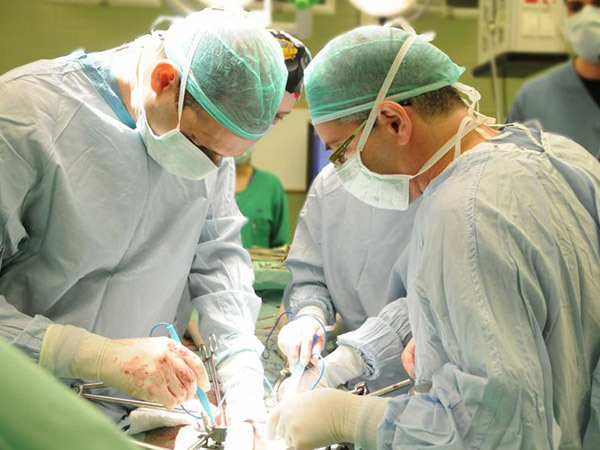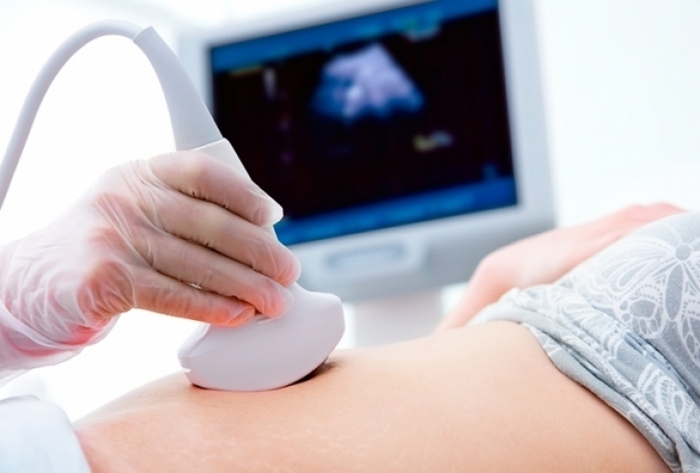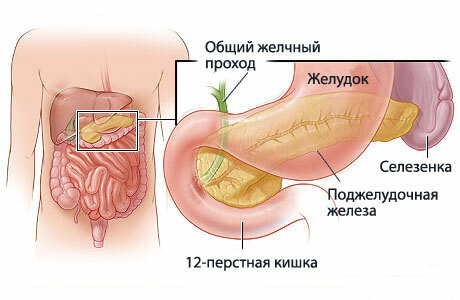How to treat steatoosis of the pancreas?
Pancreatic steatosis - what is this disease? This question is of interest to many of the people who are facing this ailment.
After reading the article, you will learn about the essence of this pathology, as well as whether specialized treatment and diet help get rid of it.
More on Pancreatic Steatosis
Contents:
- More on Steatosis of Pancreas
- Symptoms, Diagnosis and Treatment of Steatosis
- Principles of Proper Nutrition for
Disease Steatosis of the pancreas( and liver) is a pathology characterized by structural changes in the body organ.
In particular, with steatosis, the normal cells that make up the body of the pancreas are replaced by lipocyte( fat) cells.
Unfortunately, to provoke the appearance of this disease can a number of reasons.
The most common cause of steatosis is a stable malnutrition.
The second place in the list of causes of steatosis is various pathological conditions affecting other internal organs of the digestive system and provoking the occurrence of unpleasant side reactions.
It should be noted that this pancreatic disease develops not suddenly, but gradually, and its first stages in no way make itself felt.
Specific symptoms, characteristic of steatosis of the pancreas, begin to appear only in neglected cases.
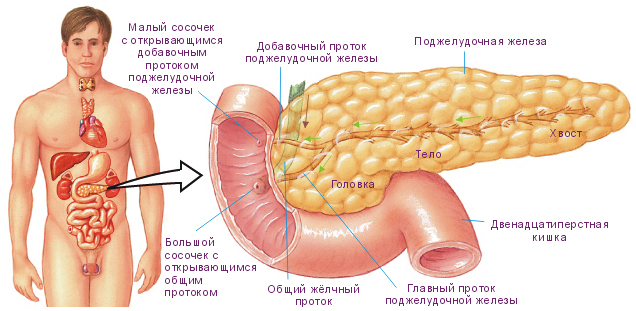
Untimely, inadequate treatment of this pathology or complete absence of medical control over the course of the disease can provoke a large-scale degradation of the pancreatic tissues, which sooner or later lead to a deficiency of this organ.
Causes of the emergence of steatosis of the pancreas and liver( extended list):
- alcohol and nicotine abuse;
- unbalanced food saturated with fatty, fried, spicy, salty and canned food;
- cholelithiasis;
- various inflammatory processes localizing in the field of internal organs and provoking the destruction of their cells;
- imbalance of lipoproteins in the body;
- diabetes and obesity;
- uncontrolled intake of drugs saturated with glucocorticoids, analgesics, cytostatics and antibiotics;
- surgical interventions performed to correct the malfunction of the gastrointestinal tract.
Women and men of fifty to sixty years old are at risk of developing steatosis of the pancreas and liver.
However, young people, and even children, may develop an ailment.
Symptoms, Diagnosis and Treatment of Steatosis
Symptoms that may indicate the presence of steatosis of the pancreas and liver in advanced stages of the disease:
- regular diarrhea;
- nausea;
- various signs of dyspeptic disorders;
- heaviness in the abdomen;
- heartburn occurs at any time of the day, regardless of food intake;
- skin allergies, manifested by urticaria, itching and burning of certain areas of the skin;
- pain, mainly localized in the upper third of the abdominal region, but capable of radiating to the left hypochondrium;
- reduced immunity;
- yellowing of the skin and sclera of the eyes;
- weakness, increased fatigue, problems with sleeping and falling asleep.
It is possible to detect such a disease as steatosis of the pancreas and liver, using hardware and laboratory studies.
As a rule, doctors who suspect about the presence of steatosis in their patients send them to ultrasound( showing increased echogenicity in certain areas of the organ) or to MRI( clearly demonstrating the localization of structural changes in the tissues of the organ).
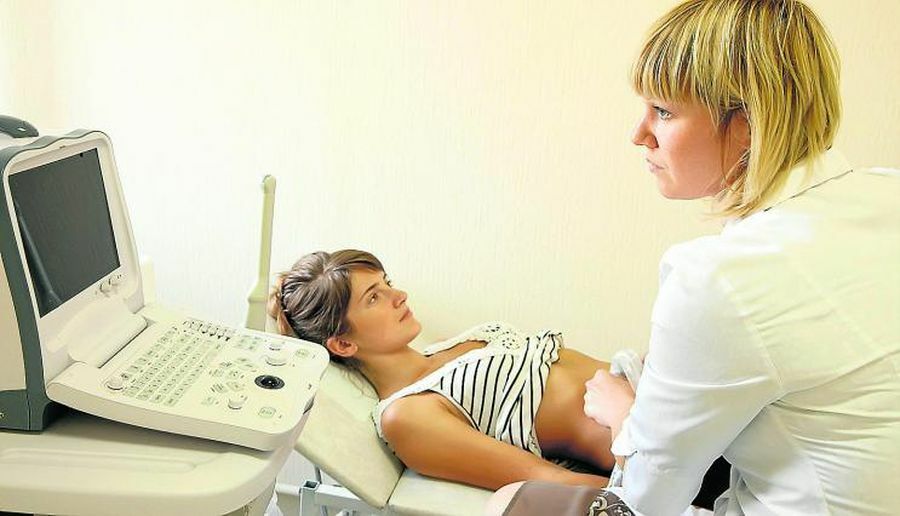
It is possible to detect steatosis of the pancreas by passing general biochemical analyzes of blood and urine. The presence of this disease may indicate an elevated level of alpha-amylase.
Treatment of steatosis of the pancreas and liver depends on the degree of damage to these organs. There are two methods for correcting such a pathological condition: conservative and surgical.
Conservative treatment of steatosis of the pancreas and liver is prescribed in cases where:
- fat cells are located on the entire surface of the organ or have a large and scattered placement;
- fatty layers have a small size and do not exert pressure on the exocrine ducts of the organs.
Conservative treatment involves adherence to the principles of special therapeutic nutrition( Diet No. 5 and No. 8 for Pevzner).
In addition, such treatment is unthinkable without taking special medications, saturated with enzymes and components that reduce the amount of hydrochloric acid in the stomach.
In some cases, patients are prescribed additional groups of drugs responsible for simplified evacuation of fats from the intestinal system.
Surgical treatment is prescribed either after a course of conservative therapy that has shown its inconsistency, or in those cases when the steatosis of the pancreas and liver affects the large areas of these organs.
Such treatment can be carried out during a classical cavitary operation, but most often from lipomatous nodes that result from this pathology, get rid by endoscopic manipulation.
Principles of proper nutrition in the disease
It is important to understand that steatosis of the pancreas is an irreversible pathology. Cells that have already changed their structure to fatty will not become normal.
Fortunately, the process of their further degradation can be stopped. The drugs mentioned above will help in this process, as well as the diet, the basic principles of which are listed in this article.
With steatosis of the pancreas, a diet called "Therapeutic table number 5" is prescribed, as well as a diet called "Therapeutic table number 8".
Basic principles of such nutrition:
- complete rejection of fried, smoked dishes and salines;
- complete refusal of alcohol and smoking;
- significant restrictions in the use of sweet and flour products.
The diet with steatosis involves the reception of products that stimulate the processes of removing fat deposits from the body.
Among them:
- low-fat cottage cheese and skimmed milk products;
- vegetables and unsweetened fruits;
- soy products;
- porridge;
- low-fat meat, fish and poultry steamed, boiled in a small amount of water, stewed or baked.
The diet for steatosis does not impose any restrictions on the intake of high-calorie foods, provided that such food will not be contained in the list of prohibited foods.
The total daily calorie content of dishes eaten by patients with steatosis should range from 2200 to 2500 Kcal.
If there is such a disease, you need to eat fractional, at least five times a day.
It is better to eat often and absorb small portions of food than to load your digestive tract with one-time meals of a large amount of food.
Video:
After reading this article, you were able to learn about such a pathology as steatosis of the pancreas.
If you care about your health and want to keep it for many years, then do not wait for the symptoms of steatosis and begin to follow your nutrition from the youth, as well as abandon bad habits.
Early detection of pathology will allow to stop its spread and normalize the patient's condition, while preserving the high quality of his life.
If you do not treat this pathology, you can achieve complete loss of functionality of the pancreas and, as a result, get disability.

